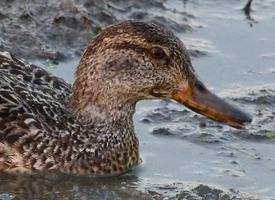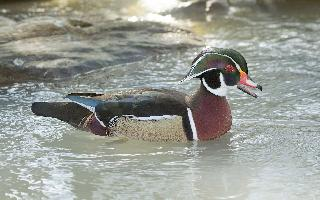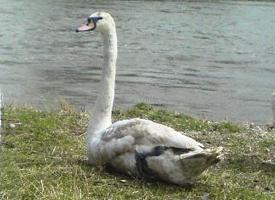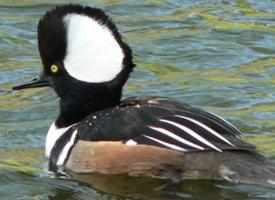
Poids et mesures
| Longueur | de 34 à 38 cm |
|---|---|
| Poids | de 200 à 400 g |
| Envergure des ailes | 60 cm |
Description de l'animal
The Eurasian teal, scientifically known as Anas crecca, is a captivating small dabbling duck and one of the most widespread members of the duck family. This diminutive bird is a marvel of nature, exhibiting a combination of agility, resilience, and beauty that makes it a favorite among birdwatchers and nature enthusiasts alike. The Eurasian teal is distinguished by its striking plumage, fascinating behaviors, and significant role in various ecosystems.Adult males in breeding plumage are particularly striking, with a chestnut-colored head adorned by a broad, iridescent green eye-patch that stretches from the eye to the back of the head, a feature that instantly catches the observer's eye. Their breast is spotted with black, and they have a creamy yellow patch on their flanks. In contrast, the female is more subdued in coloration, predominantly mottled brown, which serves as excellent camouflage among the reeds and vegetation of her habitat. Both genders, however, share a distinctive green speculum (the panel on the wing) bordered by narrow white stripes, a feature that becomes particularly noticeable in flight.
The Eurasian teal is a small species, with a length ranging from 34 to 38 cm and a wingspan of 53 to 59 cm, making it the smallest extant member of the Anas genus in its range. Despite its size, it is known for its hardiness and adaptability, capable of enduring the harsh winters of its northern breeding grounds.
This species exhibits a wide range of habitats including shallow freshwater lakes, marshes, ponds, and rivers, showing a particular preference for bodies of water with abundant vegetation. This preference is tied to their feeding habits; teals are omnivorous, dabbling for plant food, small insects, and aquatic invertebrates. Their diet varies seasonally, depending on the availability of food resources.
Breeding typically occurs in the spring and summer months. The Eurasian teal is a monogamous bird, with pairs forming during the winter months. Nests are built on the ground, hidden among vegetation close to water, where the female lays 8 to 11 creamy or greenish-brown eggs. The incubation period lasts about 21 to 23 days, during which the female primarily, if not exclusively, incubates the eggs while the male guards the territory.
One of the most remarkable aspects of the Eurasian teal is its migratory behavior. Birds that breed in the northern parts of their range, including Scandinavia, Russia, and northern Asia, undertake long migratory journeys to winter in warmer climates. Their wintering grounds span southern Europe, Africa, and southern Asia. During these migrations, teals can travel thousands of kilometers, showcasing their endurance and navigational skills.
Conservation-wise, the Eurasian teal is considered to be of Least Concern by the International Union for Conservation of Nature (IUCN), thanks to its wide distribution and large population. However, like many migratory bird species, they face threats from habitat destruction, climate change, and hunting. Conservation efforts are therefore essential to ensure that this species continues to thrive in its natural habitats.
In summary, the Eurasian teal (Anas crecca) is a fascinating and resilient bird species, characterized by its distinctive appearance, diverse habitats, and remarkable migratory behavior. Its presence enriches the biodiversity of wetlands and waterways across a vast range, making it a key species in the health of these ecosystems.
Carte de répartition
Animaux similaires
Nouvelles photos d'animaux
Top 10 des animaux
- Dolphin gull (Leucophaeus scoresbii)
- Diana monkey (Cercopithecus diana)
- Moustached guenon (Cercopithecus cephus)
- Galápagos tortoise (Geochelone nigra complex)
- Japanese macaque (Macaca fuscata)
- Russian tortoise (Testudo horsfieldii)
- Stone loach (Barbatula barbatula)
- Greek tortoise (Testudo graeca)
- Common flying dragon (Draco volans)
- Vendace (Coregonus albula)


